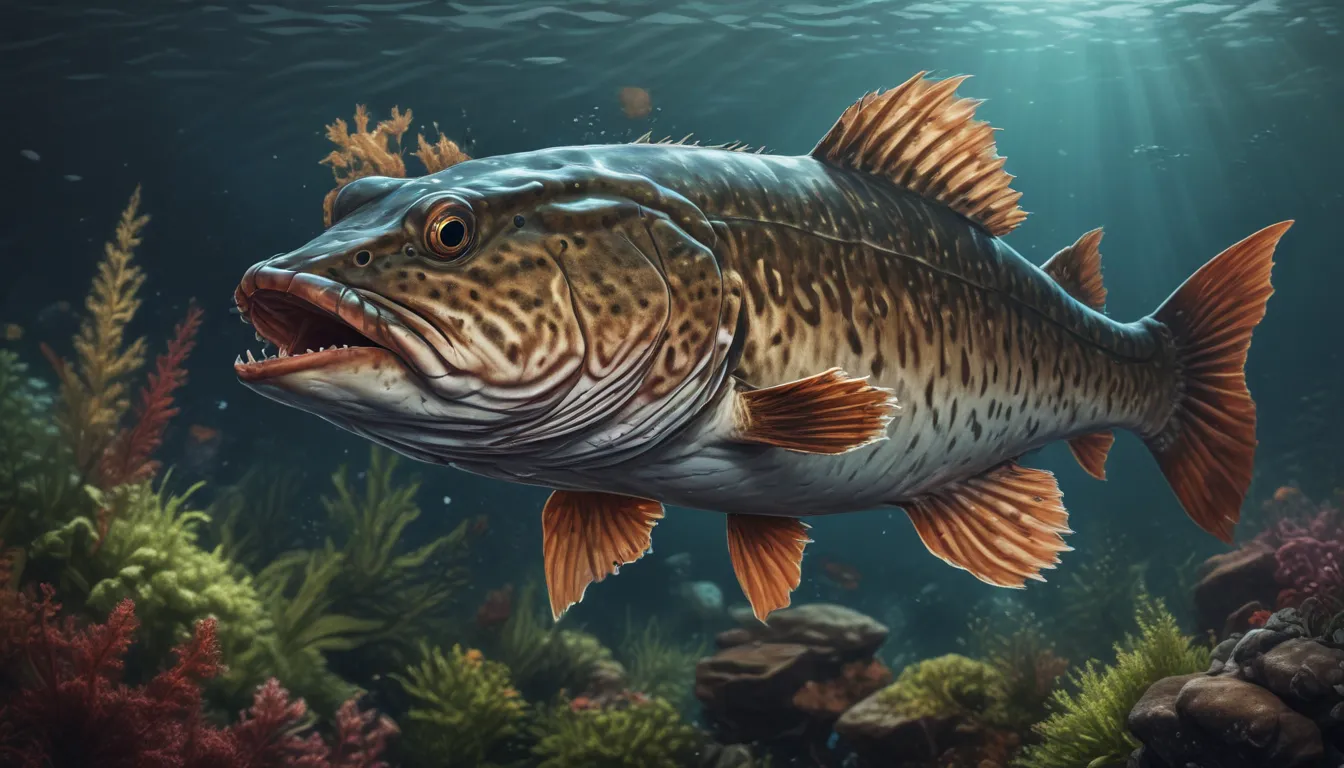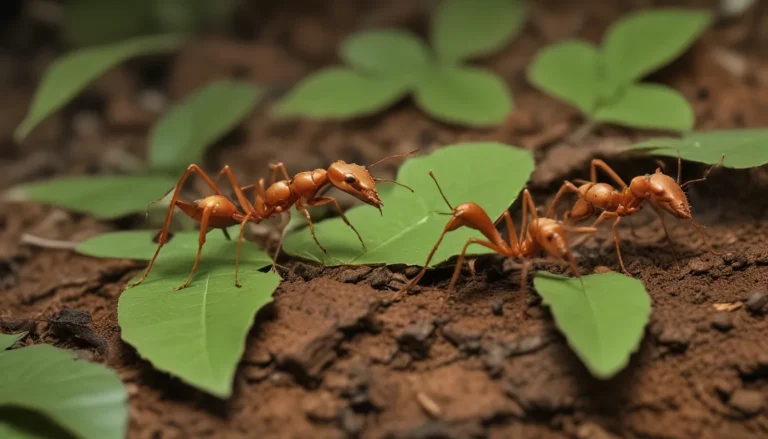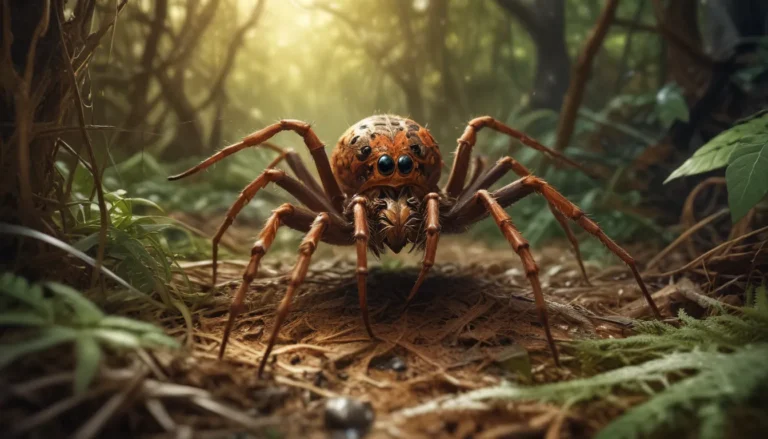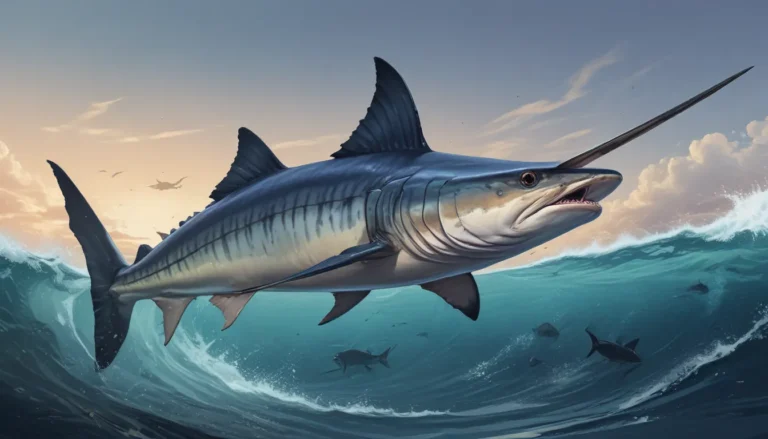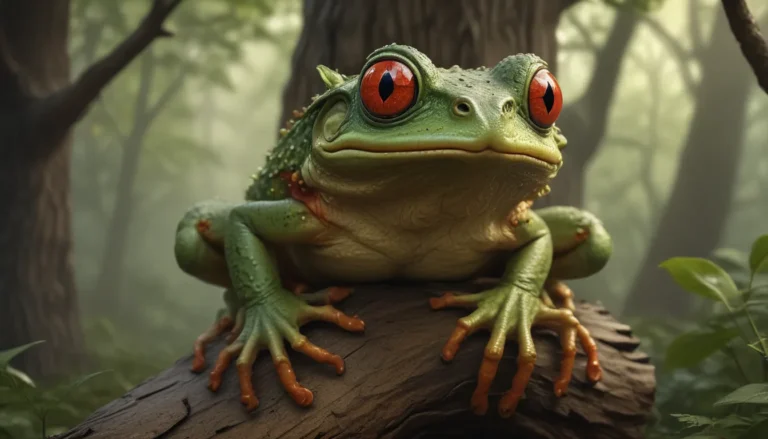The pictures we use in our articles might not show exactly what the words say. We choose these pictures to make you interested in reading more. The pictures work together with the words but don’t take their place. The words still tell you the important facts.
If you have ever ventured along the coastal waters of the North Pacific Ocean, you may have come across the intriguing lingcod. Despite its misleading name, the lingcod, scientifically known as Ophiodon elongatus, is not related to actual cod but rather belongs to the greenling family. These impressive creatures are known for their large size, intimidating appearance, and aggressive nature, making them a sought-after target for anglers and marine enthusiasts alike. Join us as we delve into the world of lingcod and uncover 17 captivating facts about this remarkable species, shedding light on its physical attributes, behavior, habitat, and conservation status.
Delving Deeper: Unveiling the Mysteries of Lingcod
- Lingcod: Not Your Average Cod
Despite their name, lingcod are not part of the cod family. They belong to the greenling family and share more similarities with rockfish than with true cod species.
- Native to the Pacific Coast
Lingcod can be found along the North American Pacific Coast, from Alaska to California. They prefer rocky areas and kelp forests as their primary habitat.
- Impressive Size and Appearance
Mature lingcod can reach lengths of up to 5 feet and weigh over 80 pounds, making them one of the largest predatory fish in the region.
- Intimidating Predators
With their large heads, sharp teeth, and aggressive hunting behavior, lingcod have earned a reputation as formidable predators in the marine ecosystem.
- Opportunistic Feeders
Lingcod have a diverse diet that includes fish, crustaceans, squid, and even other lingcod. Their voracious appetite contributes to their status as dominant predators.
- Longevity and Dominance
Lingcod can live up to 25 years, allowing them to grow to substantial sizes and establish themselves as top predators in their environment.
- Masters of Camouflage
Their mottled skin patterns provide excellent camouflage, helping lingcod blend seamlessly with their rocky surroundings, making them more effective hunters.
- Unique Reproductive Habits
Female lingcod can lay up to 500,000 eggs, fertilized by the males. The males guard the eggs until they hatch, ensuring the survival of the offspring.
- Delicious and Prized
Lingcod have firm, flavorful flesh that is highly valued by seafood enthusiasts. Their meat is compared to halibut or grouper in taste and texture.
- Sport Fishing Favorite
Anglers are drawn to the challenge of catching lingcod, making them a popular target for sport fishing along the Pacific Coast.
- Conservation and Regulation
To protect lingcod populations, specific size and bag limits have been set in place in many areas to ensure sustainable fishing practices.
- Ecosystem Role
As top predators, lingcod play a crucial role in maintaining ecosystem balance by controlling the population of smaller fish species.
- Swimming Prowess
Lingcod are excellent swimmers with strong, muscular bodies capable of impressive speeds when pursuing prey or evading predators.
- Unique Mating Ritual
During the spawning season, males exhibit elaborate behaviors to attract mates, including head-shaking, biting, and vocalizations.
- Wide Distribution Range
Lingcod can be found along the North American Pacific Coast, as well as in the waters of Japan and parts of Russia, showcasing their adaptability.
- Symbiotic Relationships
Cleaner fish species such as wrasses and gobies help remove parasites from lingcod, benefiting both species in a mutually beneficial partnership.
- Success in Aquaculture
Due to their culinary popularity, lingcod have been successfully farmed in controlled environments, relieving pressure on wild populations.
Unleashing the Wonders of Lingcod
Lingcod's intriguing nature and unique characteristics make them a captivating subject for exploration. Whether you are fascinated by their aggressive hunting tactics, impressive size, or delectable taste, there is much to admire about these mesmerizing creatures. By immersing ourselves in the world of lingcod, we uncover a wealth of information that deepens our appreciation for these remarkable fish.
Diving Deeper: Lingcod FAQs
Q: Are lingcod dangerous to humans?
A: While lingcod may appear intimidating, they are generally not a threat to humans. It's essential to exercise caution and respect when interacting with any wild animal.
Q: How big can lingcod grow?
A: Lingcod can reach sizes exceeding 5 feet in length and weighing over 80 pounds, with anglers typically catching specimens ranging from 20 to 30 inches.
Q: Are lingcod endangered?
A: Lingcod populations are not endangered, thanks to conservation efforts and regulations aimed at maintaining sustainable populations.
Q: What do lingcod eat?
A: Lingcod have a varied diet that includes fish, squid, octopus, and crustaceans, reflecting their role as voracious predators.
Q: Can lingcod change their color?
A: Yes, lingcod can change their coloration to blend in with their surroundings, aiding in camouflage during hunting.
Q: Can lingcod be caught for sport fishing?
A: Yes, lingcod are a popular target for sport fishing, with regulations in place to ensure responsible fishing practices.
Q: How long do lingcod live?
A: Lingcod have an average lifespan of around 14 years, with some individuals living up to 20 years under favorable conditions.
Join the Lingcod Adventure
Embark on a journey of discovery as you uncover the wonders of lingcod, from their predatory prowess to their unique mating rituals. Each new fact reveals a layer of complexity to these captivating creatures, deepening your understanding and appreciation for the diverse marine life that inhabits our oceans. Explore, learn, and marvel at the beauty of lingcod as you immerse yourself in the mysteries of the deep blue sea.
